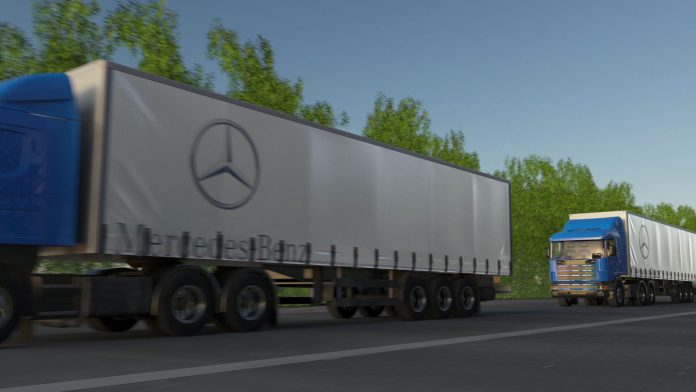Daimler also said it is reassessing its view on truck platooning
Daimler Trucks announced plans to invest EUR 500 million ($570 million) with the aim of bringing highly automated trucks (Society of Automotive Engineers level 4) to the road within a decade.
In commercial trucking, level 4 — in which the vehicle can handle all driving functions under certain conditions, but a driver can have the option to take control — is the “natural next step” after partial automation at level 2, the company said. The move to level 4 means increasing efficiency and productivity for customers and cuts costs per mile significantly, according to Daimler.
Daimler Trucks said it is skipping the intermediate step of conditionally automated driving (level 3). Level 3 automated driving does not offer truck customers a substantial advantage compared to the current situation, as there are no corresponding benefits to compensate for the technology costs, the firm added.
The new Freightliner Cascadia offers partially automated driving features (level 2), making it the first-ever partially automated series production truck on North American roads.
“As a leader of our industry, we’ve been pioneering automated trucking. In 2015, our Freightliner Inspiration Truck got the first road license ever for an automated commercial vehicle. Now we take automated trucking to the next level: we’re ready to launch the first partially automated new Freightliner Cascadia in 2019 – and next, we tackle highly automated trucks,” said Martin Daum, member of the board of management of Daimler AG with responsibility for Daimler trucks and buses.
“Highly automated trucks will improve safety, boost the performance of logistics and offer a great value proposition to our customers – and thus contribute considerably to a sustainable future of transportation,” said Daum.
Daimler Trucks said it is already bringing partially automated driving into series production with features like its Active Drive Assist and Detroit Assurance 5.0 with Active Lane Assist. The new system can independently brake, accelerate and steer. Unlike systems that only work above a certain speed, Active Drive Assist/Detroit Assurance 5.0 make partially automated driving possible in all speed ranges for the driver for the first time in a series production truck, Daimler said. Active lateral control and the connection of longitudinal or lateral control in all speed ranges are new, thanks to the fusion of radar and camera information, the company added.
Daimler Trucks also said it is currently reassessing its view on platooning. Daimler Trucks defines platooning as the electronic coupling of two or more trucks with significantly reduced distance between them to, in theory, improve aerodynamics and therefore save fuel. Daimler Trucks has tested platooning for several years, especially in the U.S., where benefits would be expected to be the most substantial. Results show that fuel savings, even in perfect platooning conditions, are less than expected and that those savings are further diminished when the platoon gets disconnected and the trucks must accelerate to reconnect.
Daimler Trucks also said it is creating 200 new jobs in the area of level 4, highly automated driving. The newly created positions and roles are to be filled primarily by mechatronics engineers or robotics specialists with IT and programming skills. The main location for these new positions is Daimler Trucks and Buses’ new Automated Truck Research & Development Center in Portland, Oregon. The center’s experts are dedicated to all aspects of developing, testing and validating automated vehicles.

